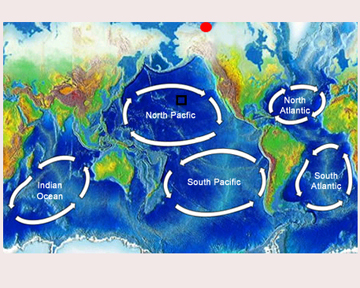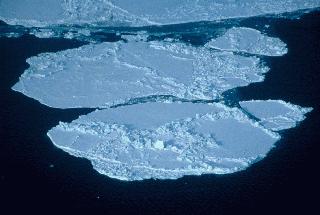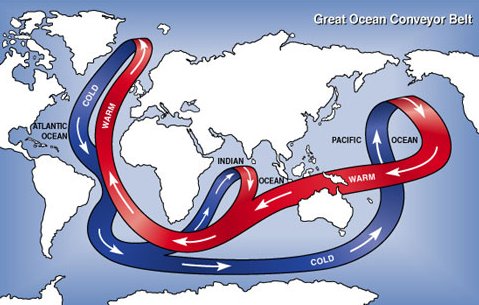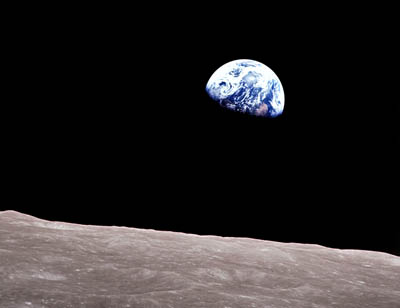Click on image for full size
Windows Original (Original map is from Wikipedia Commons)
Related links:
Motions of the Ocean - An Overview
The Woods Hole Oceanographic Institute: Beaufort Gyre
Wikipedia's Great Pacific Garbage patch
Changing Planet: The Case of the Leaky Gyre
Changing Planet Navigation Page
Researching under the Arctic Sea Ice
Resources for Teaching about the Poles and the Cryosphere
Ocean Gyres
A gyre is another name for a swirling vortex. Ocean gyres are large swirling bodies of water that are often on the scale of a whole ocean basin or 1000’s of kilometers across (hundreds to thousands of miles across). Ocean gyres dominate the open ocean and represent the long-term average pattern of ocean surface currents. Ocean gyres in the Northern hemisphere rotate clockwise and gyres in the Southern hemisphere rotate counter-clockwise due to the Coriolis effect.The major gyres of the ocean include: North Atlantic, South Atlantic, North Pacific, South Pacific and Indian Ocean gyres. A simplistic drawing of those can be seen on this page. Many other smaller gyres exist in the ocean too.
One such smaller gyre is the Beaufort gyre found in the Arctic Ocean. The Beaufort gyre is a huge vortex of water being driven by strong winds that force currents in a clockwise direction. This gyre is full of relatively fresh water as Siberian and Canadian rivers drain into the Beaufort gyre. Scientists have been keeping a close eye on the Beaufort gyre because of the relatively fresh water it holds. When winds slack off and the gyre weakens, fresh water leaks out of the gyre and into the North Atlantic Ocean. The addition of fresh water from the Beaufort gyre along with fresh water from melting sea ice could be contributing to the disruption of the global ocean current system known as the ocean conveyor. This slowing or halting of the ocean conveyor system will have impacts on the climate in the North Atlantic and surrounding areas.
One of the largest ocean gyres, the North Pacific gyre, is home to an area called the Great Pacific Garbage Patch. This area contains a lot of litter! It is estimated to cover an area roughly twice the size of Texas and contains approximately 3 million tons of plastic litter, though much of this plastic is broken up into pieces too small to see with the naked eye.
Surface ocean currents, ocean gyres, deep ocean circulation and the atmosphere are all parts of the Earth system. Understanding ocean-atmosphere interactions is a key part of understanding global climate change as well as how different things like water, energy, nutrients or pollutants move through (or get trapped within!) different parts of the Earth system.














